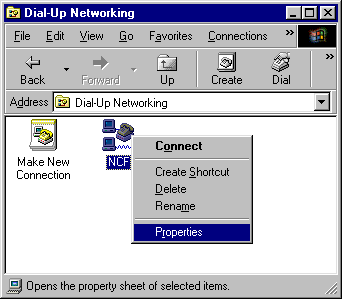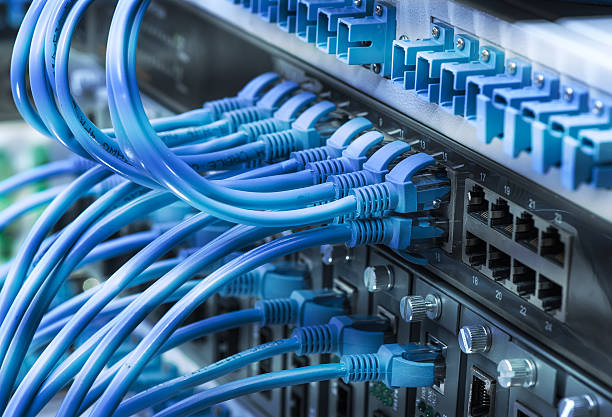The purpose of this series of modules is to teach you about internet and how internet is changing rapidly in Nigeria. However, before we can educate you about any of these things, we need to make sure that you have a basic understanding of the term broadband. Also visit my previous blog on “how does the internet works“
What is broadband?
You probably have an idea of what the term is. You probably use it every day. But what is it? Are you able to define the term broadband? Don’t feel badly if you can’t.
Even though it’s a common term that everybody uses, many people, even information technology experts, all have a hard time agreeing on what exactly it means. That said, you probably have seen or heard the term broadband, or its equivalents, in many contexts. For example, your local internet service providers are probably advertising broadband or high-speed internet access today. Other companies are advertising speed, such as 4G LTE and 5G mobile network carriers. There are even many government organizations dedicated to promoting broadband, including the Nigerian Communications Commission(NCC) through the National Broadband Plan dedicated to improving broadband internet access to communities all across the state.
Clearly companies are selling it.The government is spending money to make it better.
You are probably a customer.
But what is broadband?
Put simply, broadband means fast, as in fast internet access. And it also means faster than what I had yesterday. There’s no universal definition that everybody agrees on, including engineers and government regulators. But generally, everybody agrees that broadband means fast. Fast enough, for example, to stream music, to stream video, and to download large files quickly.
*But let’s look at some of the formal definitions of broadband, including the technology behind it.*
The federal government has a number to define broadband. That number is 25 megabits per second on the downlink. There’s another number associated with that. That number is 6 megabits per second on the uplink. Do those numbers mean anything to you? Unless you’re a technical person, and even then, they probably don’t. But these are the speeds the government says qualify something as broadband. But your broadband internet provider at home and your broadband mobile network carrier probably don’t provide those speeds today. But we’ll have more on that later.

So what is broadband?
After all that, it sounds just about as clear as mud to me. And it probably sounds about the same to you. So let’s compare a few different broadband technologies, what they are, and how they compare to help us figure it all out.
How to measure internet speed
To compare different technologies, you need to understand how we measure speed. For that, we use the term throughput. You probably use the term bandwidth. Bandwidth and throughput mean pretty much the same thing for most purposes. So whenever you think about bandwidth, just think about the word throughput. To measure throughput, we use a value called bits per second, or BPS. Measuring bits per second is kind of like measuring the amount of water flowing through a river. Just like a large river flowing very fast means you have a lot of water, having a large broadband pipe with lots of bits flowing at the speed of light means you have a lot of data.
But now you’re probably wondering, what is a bit? Well, you probably know that all digital information is a sequence of ones and zeros. Everything, the TV shows and movies you stream, the music saved on your phone, every website you open in a browser, all data is stored as a sequence of ones and zeros. These ones and zeros are called bits.
For example, ten ones and zeros(101010101010) is called ten bits. So what if I said you could send ten of those bits in one second? How would you describe that?

That’s right. You would say that is ten bits per second. What you just described right now, that’s throughput. That is literally how many ones and zeros, or bits, someone can send in one second.
So ten bits per second means we can send ten ones or zeros per second. One thousand bits per second means we can send one thousand ones or zeros, or one thousand
bits per second.
Let’s review a few different types of internet access technologies to help us figure out the term broadband.
Dial-up internet is definitely not broadband by today’s standards, but it’s good to use as a baseline that you’re probably familiar with. Dial-up internet from the mid to late 1990s had a speed of about 56,000 bits per second, or 56 kilobits. You might remember the term 56K modem. This is where that term comes from. That means a maximum of 56,000 ones or zeros are transmitted every second. That isn’t very fast by today’s standards, but at one point it was pretty cutting edge. You wouldn’t be able to stream movies over a 56K connection though.
Now let’s look at a couple of technologies that would actually count as broadband.

DSL broadband internet provided by your telephone company provides up to about seven million bits per second, or seven megabits. That means seven million ones or zeros are transmitted every second.
Cable internet does about the same speed as DSL, at least these days, where DSL is a lot faster than it used to be. Neither cable internet nor DSL are new technologies.
Both have been around since the 1990s. However, both technologies are always improving, and they are both definitely much faster than they used to be.
Most people would call both technologies broadband by today’s standards, because they are fast enough to download large files and stream multimedia, such as TV shows or live video. Other internet, which has just recently been introduced to some markets in the Nigeria in about the last few years, is very fast. One billion bits per second, or one gigabit. That is one billion ones or zeros transmitted every single second, or over 100 times as fast as your DSL or cable.
Now, I don’t know what you think is broadband, but I’d say that is definitely broadband.

How do mobile networks stand up?
Mobile network (Mobile broadband) allows us to access the internet even when we are moving From one place to another as opposed to fixed broadband. 3G, or third generation mobile networks, were first built in the United States around 2003, and they still operate today. While different Mobile network carriers all used different technologies for data in 3G, they all provided about the same average throughput speed of about one million bits per second. That’s one megabit.
By today’s standards, that’s not broadband, because you’d have a hard time streaming video or much multimedia at all.
4G, or fourth generation mobile networks, were built in the United States around 2010. 5G or fifth generation mobile networks is the latest and fastest, 5G can be significantly faster than 4G, delivering up to 20 Gigabits-per-second (Gbps) peak data rates and 100+ Megabits-per-second (Mbps) average data rates. 5G has more capacity than 4G. 5G is designed to support a 100x increase in traffic capacity and network efficiency.
LTE(Long Term Evolution)
All major mobile network carriers in the Nigeria today use a technology called LTE, which stands for long-term evolution. LTE is an open global standard for mobile network voice and data networks.
LTE provides average throughput speeds of about five million bits per second. That’s five megabits. That doesn’t sound very fast compared to your home internet service, and especially not very fast at all compared to fiber and 5g. But remember, mobile networks communicate all of that information, without wires, everywhere you go. And it’s still pretty fast, suitable for streaming video, carrying voice over LTE telephone calls, and carrying billions of social media transactions every single day.
Remember when I said that the federal government has a number to define broadband? Remember that as of January 2015, that number is 25 megabits per second? According to the federal government, broadband technologies have to let you download 25 megabits per second, and to upload, that means send out to the internet, six megabits per second.
But most broadband providers today don’t offer those speeds, or at least most of their customers don’t have access to that level of service. This includes the 4G mobile networks.
The only technology that always meets this definition today is fiber internet and 5G mobile networks, which most people don’t even have access to where they live. Does that mean that your home internet service is not broadband? That is hard to say. It probably doesn’t meet the NCC’s standard for broadband.
However, the NCC’s benchmark for 25 megabits per second, that’s new as of 2015. As technology and networks continue to improve, they will probably catch up with the NCC’s definition.
So what about today’s blazing fast 4G LTE networks?
Well, they provide typical speeds from between one quarter to one half of the NCC’s definition for broadband, in most cases anyway. Does that mean that 4G is not broadband? Well, mobile networks are constantly being improved too, so their speeds will only get better with time as well. But after looking at all of these numbers, I think it’s easier to say what we said in the beginning, that broadband means fast, and that means faster than what I had yesterday. That means that the benchmark is always going to move. You will always demand something better because you will always demand something faster than what you had yesterday.
But hopefully, you now have a better understanding of what the term broadband means, the technologies behind it, and how those different technologies compare, in particular, how they compare to each other and how they compare to the federal government’s definition.
And remember, what you think is broadband today is probably not going to be broadband tomorrow because tomorrow you will still define broadband as faster than what I had yesterday.”

